Flamingos … What beautiful and peculiar creatures! Have you ever wondered why they are pink? This is not a very common color in nature. They also produce milk and sleep standing on just one leg. What a balance! Keep reading to answer this question and learn more interesting facts.
Why are flamingos pink?
There are six species of flamingos, and although each one has its peculiarities, all of them have some amount of pink color. But the color of their plumage is not a product of genetic constitution. It depends on their diet.
They need water to survive. Their natural habitat is areas of abundant water and mud, which is why they are found in wetlands, marshes, lagoons, lakes and swampy areas.
Depending on the area they live in, there are different resources at their disposal. They feed on almost anything, such as small crustaceans, mollusks, annelids, larvae, insects, fish, bacteria, microorganisms and algae.
However, their diet is high in carotenoids, a pigment that plants and algae produce. Flamingos metabolize them and that gives rise to their color. In fact, flamingo chicks are white or gray. Only when they begin to consume food rich in carotenoids do they start to acquire a pink color.
Carotenoids also give the characteristic color to many vegetables, crutaceans and shrimp. Artemia salina is a small crustacean that flamingos eat in large amounts, along with algae and shrimp, and that produces the most color. The more pink or red food a flamingo eats for a long period of time, the more pink or reddish they become. Thus, they are what they eat.
Other animals, including humans, could change their skin or plumage color, but they would need to consume plenty of carotenoids as a constant routine. Can you imagine eating carrots for days to get an orange color?

They have a very different beak from other birds
Flamingos are filter-feeding birds using the best tool possible for feeding: their beak. They use their long legs to stir up the bottom of shallow waters. Then, they take in some water with their beak and use their tongue to retain the food and expel the water and mud.
Additionally, flamingos eat with their head upside down. That’s because of the curved shape of their beak. Flamingos bend down, submerge their head and take in water with their beak and filter it. Even though they are facing down, they can freely move their jaws, which helps with feeding.
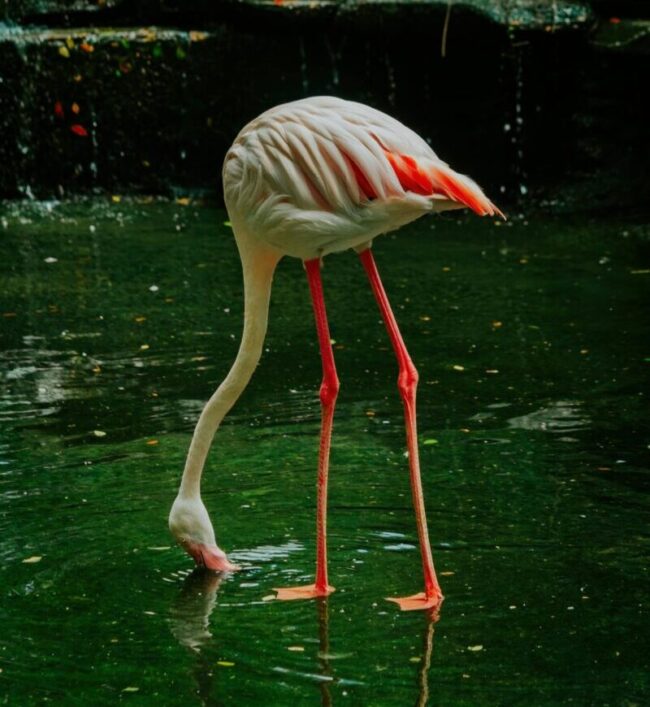
They are marvelous parents
Flamingos are very sociable. They live in large groups and mate with members of their own flock. Mating starts with a courtship that the largest males usually initiate. They begin to move their head and wings and strut. As with peacocks, male flamingos proudly display their beautiful plumage to attract the attention of females.
The selection of partners is very important, since flamingos are monogamous, that is, male and female will spend their entire lives together. All flamingos are caring fathers and mothers who are very involved in taking care of their offspring.
Flamingos build their nests with their legs, forming a cone-shaped mound with mud, wider at the base and narrower at the top. It measures between 12 and 15 inches (30 and 40 cm) in height.
They then make a hole in the center, where the female lays her eggs, usually just one, sometimes two. Incubation lasts about 30 days. At birth, the chicks have white or gray feathers. Flamingos can live 20 to 30 years in the wild or about 50 years in captivity.
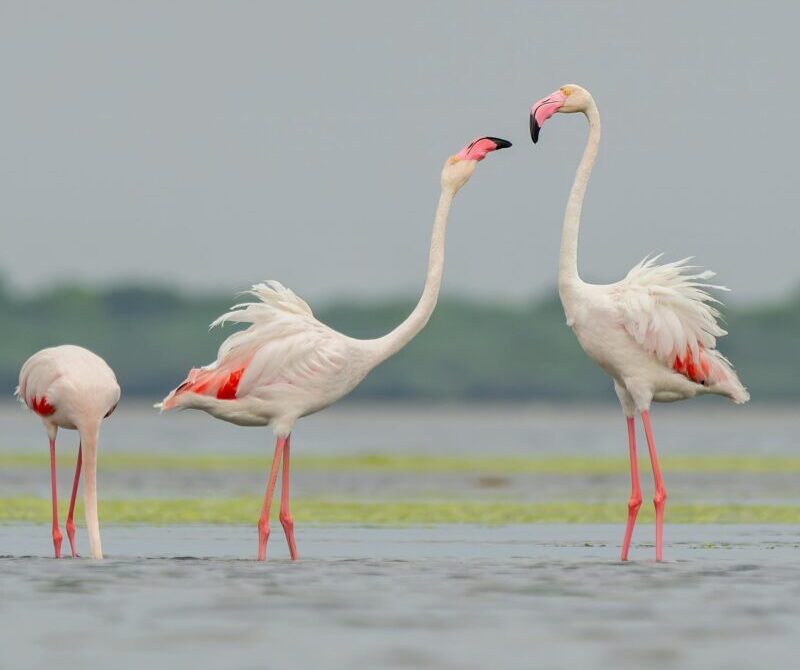
Flamingos produce milk
Both parents participate in building the nests, incubation and subsequent care of the chicks. And did you know that flamingos produce milk? Actually, it is not milk as we know it, but a substance that both females and males produce to feed the chicks.
It is called crop milk and, since they do not have nipples or mammary glands, flamingos produce it from a specialized part of their digestive tract, and give it to the chicks through their beak.
Their milk is rich in fat, protein and other nutrients. In addition, it has a pink color due to the high carotenoids content from the parents’ food. This allows the little flamingos to start getting the pink tone in their feathers. Watch a video of adult flamingos eating and feeding their chicks.

Flamingos have a curious anatomy
Flamingos have knees on each leg, but they are only visible if you look at them from a close distance, because they are half-hidden under feathers. And the joints seen in the middle of the legs are their ankles and heels.
They all have three toes facing forward and joined by a membrane that helps them swim and keeps them from sinking in the mud. Their curved neck has 19 cervical vertebrae.
Their beak is strong and each jaw has two rows of lamellae (thin plates) that filter food; they do not chew their food. Although their habitat is usually salty, they drink fresh water.
Amazingly, in flight they can reach speeds up to 37 miles per hour (60 kph).

They stand on one leg while resting
Have you noticed that flamingos stand on one leg? Scientists are considering some hypotheses.
One theory that’s common in other birds, is that it reduces heat loss (this is called thermoregulation). By exposing only one leg while the other is warm under the plumage, they lose less heat. Also, they place their head close to the body or under the feathers while sleeping to keep the warmth.
Another theory is that this prevents both legs from being rigid, allowing them to escape from a predator.
Others say they perch on one leg to save energy, since this position does not require active muscular effort.
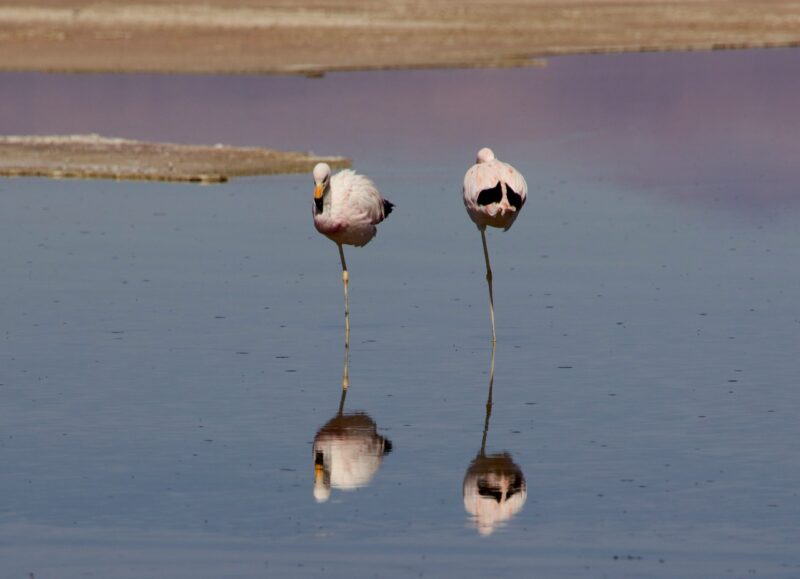
Greater and lesser flamingos
The six types of flamingos are:
The greater flamingo. It’s the largest species of all and it’s 4 to 5 feet (120 to 150 cm) tall and weighs approximately 9 pounds (4 kg). It’s located in Asia, Africa and Europe.

Then the lesser flamingo is the smallest. It’s 31 inches (80 cm) tall and weighs 5 pounds (2.5 kg). It’s native to Africa, although it is also found in some areas of Asia such as India, Pakistan and other regions such as Spain.

The American and Chilean flamingos
The American flamingo. It’s distributed from the south of the United States to the Galapagos Islands, and in Ecuador, Colombia, Brazil, Venezuela and all the Caribbean islands.
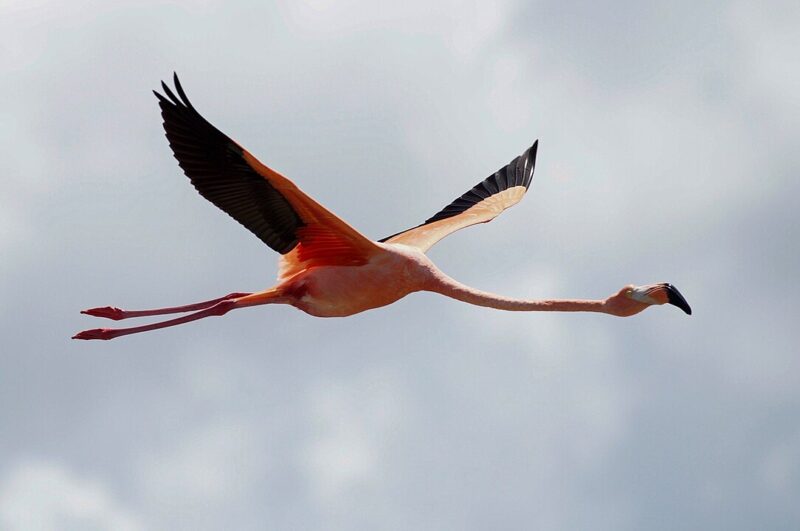
The Chilean flamingo. It’s native to Argentina, Bolivia, Chile, Paraguay and Peru. It’s also found in Brazil, Ecuador and Uruguay.

The Andean and James’s flamingos
The Andean flamingo. It’s native to Argentina, Bolivia, Chile and Peru, and sometimes Brazil.
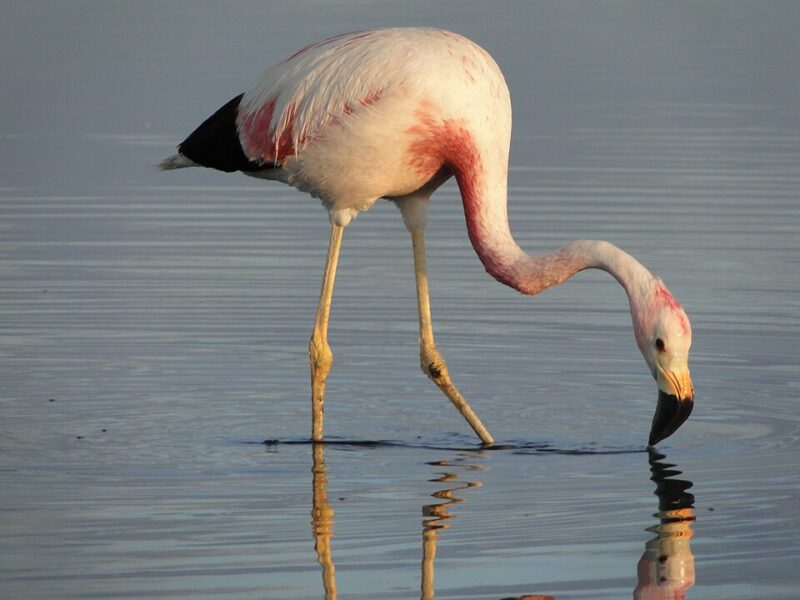
The James’s flamingo. It’s native to Argentina, Chile, Bolivia and Peru.
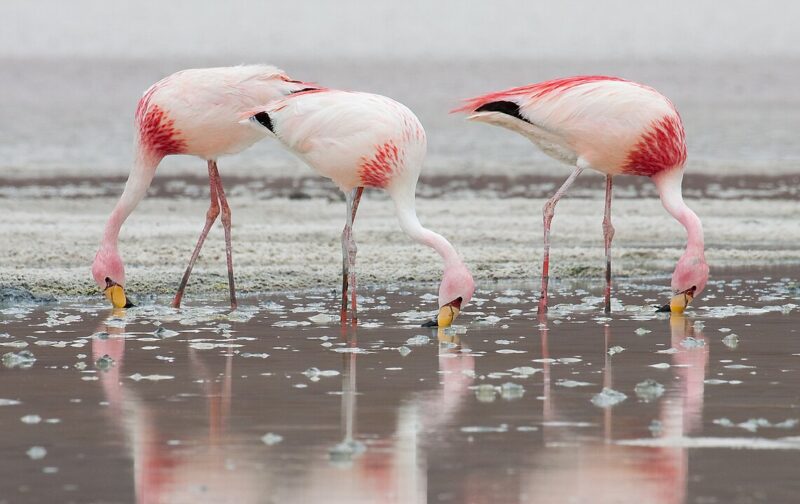
Unfortunately, flamingos have a number of predators such as lions, leopards, cheetahs, jaguars, foxes, crocodiles, badgers … Even so, you can find the largest community of flamingos in Africa. It has more than a million members.
Bottom line: Flamingos are exotic birds that eat upside down, can produce milk, are amazing parents to their chicks and sleep on one leg. How cool are they?











